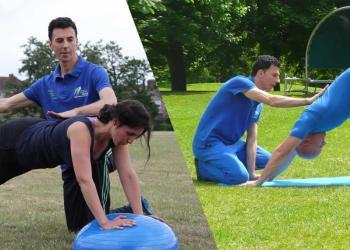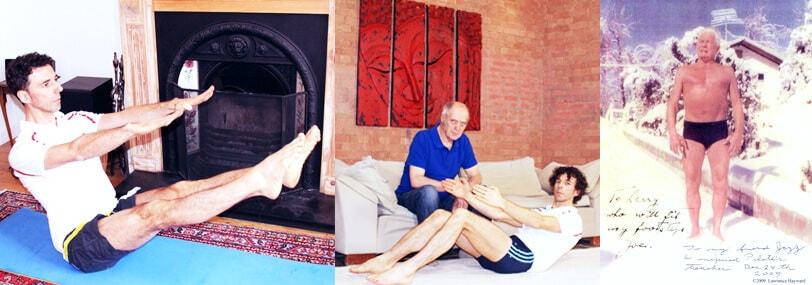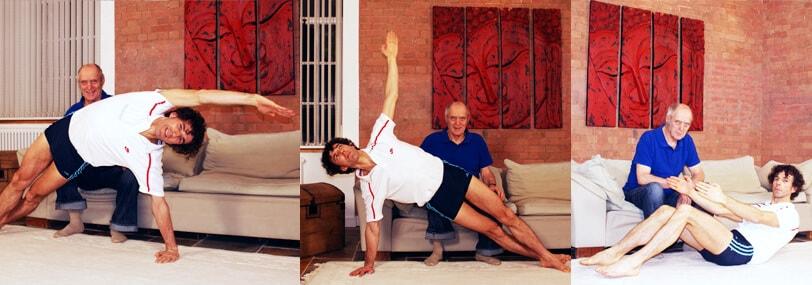Pilates for back pain has been proven both beneficial and risky. If you are living in greater London these exercises can be very helpful if they are assessed and performed correctly,
Joseph Pilates authentic method of exercise is well known around the world to help athletes recover much faster after accidents and sports injuries, through his unique and successful exercise method and approach.
Authentic London Pilates – Preparations for London Marathon, Triathlons, an improved lifestyle and better performance in other sporting events!
Pilates practice ensures optimum alignment and correct posture, helping to develop flexibility, better breathing paterns and core strength. Pilates also oxygenates your brain and muscle and helps you to de-stress.
Repetitive movements, poor posture, slumped and rounded shoulders, arms brought forward, downward gaze and curved back while sitting and staring at computer or TV screens all affect our body’s postural-structural integrity,
Personal Pilates Training Studio in Canary Wharf, London
WHAT IS PILATES?
Pilates is a system of movement that uses a series of mat floor exercises and spring-loaded machines to train the entire body and improve flexibility, strength, stamina, coordination and concentration.
A Pilates Trainer in Canary Wharf, London can help you to properly build flexibility and strength without adding excess bulk, and create a sleek, toned body with slender thighs, and even a 6 pack flat abdomen.
The focus of Pilates is on creating a strong and stable core, lean and tall body, or ‘powerhouse’, which includes the area of the body from the shoulders to just below the buttocks.
Jazz Alessi’s Pilates of Canary Wharf, London dramatically transforms your muscle tone, the way your body looks, feels, move and performs, without putting any pressure on the joints.
Brief Pilates History
Joseph H. Pilates was born in Germany in 1880.
As a child, Pilates was asthmatic and frequently ill, which led him to devote his life to the study of physical education and the pursuit of health.
He became an exercise enthusiast and an avid gymnast, skier, diver and boxer.
Pilates believed that both mental and physical health are essential components of overall health.
Joseph, pioneered his own unique training style based on the concept of incorporating and balancing the mind, body and spirit.
The exercise system developed by Joseph Pilates, known as ‘Contrology’, uses specific body weight and body-conditioning methods.
It combines the physical challenges of strength-power training, gymnastics with elements of dance and yoga, such as concentration, a specific breathing technique and a focus on muscular lengthening, switching on dormant muscles and joints decompression.
“I used to have back pain but, thanks to Jazz Alessi’s strengthening and stretching back exercises, customised stretching’s, postural exercises he designed for me I don’t have any spine or back pain anymore. I’m able now to have a very intense workout and I took my fitness to the next level. My back pain disappeared and, I’m feeling great all the time.”
– W. T. – London Metropolitan Police – Police Officer
Quality Healing Movement over Quantity
The Authentic Pilates Method of Exercise is a physical science, based on using optimum body mechanics and postural alignment.
It involves mental as well as physical training, helping you gain mastery of your mind, increase your awareness and control of your body.
Instead of performing repetitions until exhaustion, Pilates requires the careful execution of fewer, more precise movements, while aiming to perfect every possible detail of the body in motion.
Pilates works to symmetrically strengthen and stretch the body and is one of the most efficient, effective and balanced forms of exercise.
If You Want to Drink Pure Water You Need to Go to The Source
The Authentic Pilates Method of Exercise is a physical science, based on using optimum body mechanics and postural alignment.
It involves mental as well as physical training, helping you gain mastery of your mind, increase your awareness and control of your body.
Instead of performing repetitions until exhaustion, Pilates requires the careful execution of fewer, more precise movements, while aiming to perfect every possible detail of the body in motion.
Pilates works to symmetrically strengthen and stretch the body and is one of the most efficient, effective and balanced forms of exercise.
THREE PILATES GENERATIONS: Jazz Alessi 2nd Generation Pilates teacher based in Canary Wharf, London in middle Lawrence Hayward 1st Generation Pilates Elder, and on the right Joseph H. Pilates, the founder of the Pilates Method of Exercise.
Pilates Principles
Pilates is composed of eight main principles which are the basis for every exercise.
By infusing these fundamental concepts into your workout, you will improve the effectiveness and quality of your movements.
- Concentration: When you focus your full attention on performing each movement in details, correctly and with precision, you will lose the notion of time, distress, receive the maximum benefits from your workout and increase awareness of your body.
- Breathing: A natural and steady breathing technique is incorporated into each movement, helping to establish the rhythm of the exercise and deepen the connection to the core.
- Centring: The core is the focal point of Pilates.
Every movement should originate from the centre of the body, and your focus should be on maintaining a solid core throughout each exercise, while allowing the body’s limbs to move with freedom and fluidity.
- Control: Every movement should be carried out in a rhythmical and controlled manner, without using momentum.
By moving in a deliberate and controlled fashion and maintaining muscular control throughout each exercise, you will increase the effectiveness of your workout.
- Precision: Each exercise in Pilates is carefully executed using extremely precise movements.
Incorporating appropriate alignment and placement of each body part encourages optimal muscle firing patterns and helps prevent injury.
- Flowing Movements: Pilates exercises are performed with fluidity, ease and grace, using smooth and even movements.
- Isolation – maximises your body awareness, building total movement and muscle control (initial Pilates was called Contrology).
This enhances your ability to control every part of your body, to switch on and off certain muscles and to work your body parts in isolation when you will want to.
- Routine – Pilates routines are designed to be very specific for each individual.
No matter what type of sport or movement you practice Pilates exercise routines will energise you, improve your physique, mental focus and your well being.
“Thank goodness, I found Jazz. I used to have lots of postural problems and serious back pain, and of course I was very worried about this. His back rehab training was perfectly customised to my goals and needs, and since training with him I have not had any regular back pain at all. Jazz training helped me to regain my back balance, and to get rid of my back pain.”
– Nerea Carrion – Entrepreneur
CAN BEGINNERS DO PILATES?
It’s a common misconception that Pilates is only for serious athletes or professional dancers.
These groups of people first adopted Pilates to get rid of the injuries resulted from intensive training, and to take their performance to the next level.
Athletes and professional dancers aren’t the only ones who can benefit from this approach to strength training.
Human bodies are designed to move and perform, and we should have the ability to do so without pain.
Pilates is a very practical form of exercise and allows for more efficient movements and a lower risk of injury by:
- Improving core strength
- Building optimum flexibility
- Eliminating postural and muscular imbalances
Pilates is very beneficial, regardless of your fitness background.
Your Pilates Instructor should know you are a beginner and be able to adjust your form and suggest modifications as necessary throughout the workout.
Your instructor will create a unique personal programme, based on your body and individual goals.
Pilates Is Practiced by Top Class Athletes and Many A-list of Celebrities
Top UK sportsman, such as Steven Gerrard, David Beckham and Daley Blind, incorporate Pilates into their regular training program, to increase flexibility and improve their performance.
Pilates is also mainstream among actors, actresses and models.
Hugh Grant, Liz Hurley, Kelly Brook, Gisele Bundchen, Beyonce, Paul McCartney, Lady Gaga and Miley Cyrus are just a few of the celebrities who rave about the benefits of their regular Pilates practise, which keeps them in shape and looking fantastic.
HOW CAN PILATES DO WONDERS IN YOUR LIFE?
The routines and habits of daily living cause imbalances in the body through repeated overuse of particular muscles.
Do you:
- Carry your bag on one shoulder more than the other
- Have imbalanced hip levels while you take the stairs
- Have a dominant hand or leg
- Become pregnant
- Sit at a desk or work at a computer on a regular basis
- Have sciatica or lower back pain
- Cross your legs
- Had an injury or an accident
- Regularly wear high-heeled shoes
- Have scoliosis
- Sleep more on the same side of your body
- Put all of your weight on one leg while standing
- Lock out your knees while standing in place
- Hold your phone up to one ear more than the other
- Drive for long periods of time
- Have joint pains or arthritis
- Whiplash accident
- Shoulders and neck pain
If any of these points from above applies to you then, one to one Pilates will significantly help you.
“I had a much reduced range of movement in the chest, shoulder, hip area and poor posture. I couldn’t raise my arms above my head unless my arms were bent from the elbow and even with the elbow bent I couldn’t straighten my arms up. Jazz designed a specialised Pilates exercises and assisted stretches programme that I couldn’t do on my own. In the beginning, I feel exhausted after the session. Now, I don’t and I am still standing after 60, 70 minutes of training. I don’t have back pain anymore. My flexibility has now dramatically improved. I can raise my hands above my head and before training with Jazz, I could not do this.
I truly recommend Jazz Alessi professional Pilates personal training services.”
Mr F. Tak – Senior Corporate Expert Accountant
Contact Jazz now for a commitment free consultation today by clicking on this link HERE.
Pilates works to symmetrically strengthen the body and realign your spine, improving balance, posture and coordination, and creating more graceful and efficient movements.
By simultaneously lengthening and strengthening muscles, Pilates increases flexibility and builds long, lean muscle tone, making the body more mobile and less prone to injury.
With a customised workout for your goals and a healthy diet plan, you will be on your way to get your fabulous, six packs.
There are many benefits of Pilates, with the development of core strength, optimum range of movement, movement without pain and stability being the primary gain.
A strong and stable core is not only important for exercise and athletics but also imperative for everyday activities, such as bending over or carrying heavy items.
Pilates’ main focus is on core; however, you can expect to see significant strength gains in your arms and legs.
Positions and movements used to activate the core rely on extremities to control and/or apply loads to the core and likewise will benefit from Pilates.
Injury Prevention and Recovery after Injuries: Pilates helps with injury prevention and the recovery of injuries.
With an emphasis on core strength, stretching and stability, Pilates can assist in the prevention and treatment of back pain.
Back pain is a common ailment in the UK, affecting over one-fifth of the population at any one time (1).
Weak or imbalanced abdominal muscles and poor spinal stability can lead to back pain and injuries.
By training the deep, intrinsic abdominal muscles that are critical for stabilising the spine and pelvis, Pilates builds a strong and stable core and corrects postural alignment, giving greater support for your back.
“In ten sessions you will feel the difference, in 20 you will see the difference, and in 30 you will have a whole new body.”
~ Joseph H. Pilates ~
Pilates Integrates the Body and Mind
The exercises require mental precision, which in turn de-stress you and increase the physical benefits.
When you consciously focus your mind on your movements, your muscles respond more efficiently to the training.
It doesn’t take long to see the results of a regular and consistent Pilates practice.
You will even feel a significant difference in your body after just ten – one to one sessions!
“I trained Jazz in the same way Joe trained me” – Lawrence Hayward, 1st Joseph’s Pilates student teacher –
BENEFITS OF PILATES
PILATES FOR BACK PAIN
In the UK in 2016, nearly 28 million people (between one-third and one-half of the population) were affected by chronic pain, including conditions such as low back pain and osteoarthritis (2).
The main focus of Pilates is on the strengthening and stabilising of the core and centre, and when the exercises are customised it is an effective therapy for back pain (3).
When the muscles of the core are weak or imbalanced, back pain and injury can occur.
Pilates strengthens the deep abdominal muscles that support the spine and pelvis, thus improving alignment and functionality of the core and reducing risk of injury.
“I had 20, one to one rehabilitation personal training sessions in London with Jazz Alessi. During this time, my posture improved tremendously, all of my chronic back pain and back problems disappeared.”
– M. Taylor – Lawyer
Are you keen to improve your health and get rid of your sciatica or lower back pain?
Contact Jazz now for a commitment free consultation today by clicking on this link HERE.
PILATES FOR INJURIES
Pilates is effective for injury rehabilitation and prevention.
Injuries often occur as a result of muscular imbalances and improper alignment.
Pilates focuses on building core strength and stability, and creating more balance in the body by correcting posture and improving flexibility and mobility.
When the body is flexible and the core musculature is strong and stable, injuries are less likely.
PILATES FOR MARATHONS
Running is an excellent cardiovascular workout but can cause havoc to the body if it is not properly balanced with strength, core and flexibility exercises.
Marathons in particular include rigorous training regimes with many miles of repetitive movement.
Pilates will help reduce the impact of running on the back and joints by strengthening, stretching and realigning your body.
“I had an extremely poor posture, due to constantly carrying heavy bags. Jazz has changed this, dramatically, by introducing Pilates moves and steady, effective, specialised stretches and training. Jazz made all the difference I needed and I’m so happy now that my back pain is completely gone. Jazz’s training is different from that of other Pilates trainers, as he gives attention to the fine detail of the individual, and creates a tailor-made programme for the client, based on their goals; helping to create their ‘dream’ body!
He is completely different from the norm and genuinely cares!”
– Emma Choli – International marathon runner
PILATES FOR HEALTH
Pilates is beneficial for both physical and mental conditioning.
One of the main principles of Pilates is concentration.
By focusing on your body throughout the workout, you improve your body awareness and promote mindfulness, which helps you to lower stress levels and make more conscious movements during exercise and in everyday life.
Pilates increases core strength and functionality, which improves balance thus, creating a correct posture and decreases your susceptibility to injury.
Flexibility will also improve as a result of a regular Pilates practice, as the muscles are gently stretched in order to balance and realign the body.
PILATES FOR OFFICES
According to BBC News, a sedentary lifestyle, including sitting for extended periods of time, is extremely detrimental to your health and increases your risk for musculoskeletal problems and back pain (4).
Working in an office usually requires sitting in a chair and in front of a computer for prolonged periods of time.
Overtime this leads to muscular and joint imbalances, poor posture and inflexibility.
In the UK, from 2009 to 2012, there were 11,000 reported incidences of back disorders caused in the workplace due to the use of keyboard or repetitive movement activities (5).
Pilates exercises improve range of movement (ROM) and flexibility, realign the spine, symmetrically strengthen the body and build core strength and stability, all of which help to counterbalance the effects of working at a desk.
“My back pain disapeared and I don’t feel stressed anymore. I am sleeping better and I perform better in a very demanding job. Jazz Alessi’s area of specialisation completely covers back pain rehabilitation, and healthy weight loss.”
– Dr Christian H – NHS
PILATES FOR OLDER ADULTS
Elderly people can benefit from a regular exercise program in order to combat cognitive, coordination and the usual muscle decline that accompanies aging.
One of the main risks for older adults is injury, specifically falling.
Pilates significantly increases core strength and stability, flexibility, balance and coordination, which are all important factors in fall prevention amongst the elderly.
PILATES FOR CROSS TRAINING
Many forms of exercise require repetitive movements which can lead to overuse injuries.
Running and cycling are effective to improve immunity and cardiovascular exercise, but Pilates helps incorporate other important aspects of fitness, such as flexibility, whole body coordination and strength training.
It also works to improve balance, posture, focus, providing stability and functionality for your entire body and improving all of your other movements, no matter of your chosen sports.
PILATES FOR PREGNANT AND POSTPARTUM WOMEN
Pregnancy and childbirth place high demands on a woman’s body, making pregnant and postpartum women more susceptible to:
- Lower back pain, due to the increased load on their spine
- Separation of the abdominal muscles (a condition known as Rectus Diastasis)
- Pelvic pain
- Pelvic floor problems, which can lead to incontinence or prolapse
Pilates is a safe and ideal system of exercise for pregnant and postpartum women.
Throughout pregnancy, Pilates can assist a woman in strengthening the core muscles to provide support and stability for the pelvis and spine and maintain proper alignment, and thus avoid pain and injury.
Pilates is important during postpartum recovery for:
- Retraining and strengthening the pelvic floor and core muscles
- Improving posture and flexibility
- Improving overall wellbeing by promoting relaxation and reducing stress
PILATES FOR WEIGHT LOSS
Pilates will burn calories, challenge your physique and muscular strength, whether you are working on the mat or working out on a Pilates apparatus such as the Reformer, Cadillac or Wunda chair.
You will develop long, strong and lean muscles as a result.
Pilates also becomes more invigorating when you incorporate the element of ‘flow’ into your routine, by focusing to create fluid motion that begins with a strong centre and expands outward.
Each movement is executed without stress or strain, and there is a smooth transitioning from one exercise to the next, aiming for seamless, rhythmic movement throughout the workout.
Using one on one Pilates and a customised healthy diet plan you will melt fat, lose weight, and achieve an athletic, lean, long and strong body.
PILATES FOR MENTAL HEALTH
A regular exercise programme has many psychological benefits including:
- Reduced anxiety and depression due to the release of brain chemicals that make you feel good, such as endorphins
- Increased self-confidence and improved self-esteem
- Lowered stress levels, by taking your mind off of your problems
- Improved breathing patterns, which are closely related to emotional and mental states
Pilates is a meditative practise that requires mindfulness, deepens your mind-body connection and creates a feeling of wellbeing.
After a Pilates session, you are calm and centred, invigorated and have an improved mood.
You feel more confident in your body and graceful in its movements, and breathe more fully and deeply.
Learning new things is important for cognitive development and a regular strength training conditioning programme, such as Pilates, is linked to better brain function and memory.
FIVE THINGS TO KNOW BEFORE STARTING PILATES EXERCISES
Why you should do Pilates: A regular exercise programme assists in better health and longevity and improves your self-esteem.
Pilates Canary Wharf in London classes are an enjoyable and invigorating way to workout.
In a Pilates Canary Wharf, London class, you will stretch, strengthen, breathe better and balance your whole body.
You will leave feeling strong, centred and more graceful in your movements.
Pilates helps reduce and eliminate muscle and joint pain and allows you to perform better in your daily life.
In a Pilates Canary Wharf, London class, you are challenged and worked rigorously, without impact on your joints and it helps your arthritis whilst combatting osteoporosis.
Pilates should not replace all other types of exercise but instead compliment, strengthen and balance your workout routine.
Selecting a Pilates Instructor: Pilates training requires an in-depth knowledge of the body and an experienced eye for detail.
It is essential to practice Pilates with a qualified teacher in order to receive the full benefits of the exercises and avoid injury.
You will want someone who expresses passion and confidence in teaching and whose personality blends well with your own.
Pilates is not the same workout for everyone because each individual is unique, with their own postural challenges, needs and goals.
The best Pilates Instructor will design a programme specifically for your body and challenge you with variety to keep you progressing.
Which class to take first:These specific exercises are either performed on a Pilates apparatus or the mat, on the floor.
The mat work is a perfect starting point for anyone new to Pilates, particularly when you are guided by a Pilates Canary Wharf, London Instructor in a one to one session.
The instructor will complete a comprehensive assessment and will create an individualised programme tailored to your challenges, needs and goals.
The Pilates mat exercises are adaptable to every skill level and an excellent way to properly learn the fundamental movements, without also having to become familiar with the exercise machines at the same time.
The mat work will quickly have you feeling stronger and more confident in mastering the Pilates principles.
What to wear: Pilates is performed barefoot because the entire body is worked in the exercises, including the feet.
If you choose to wear socks, opt for the type with rubber on the soles to help you from slipping.
The best Pilates attire is form-fitting clothing that can stretch.
Baggy clothing makes it difficult for your Pilates Canary Wharf, London Instructor to assess the alignment of your bones and the engagement of your muscles.
Additionally, tops that tie in the back may cause discomfort during exercises that require lying on your back, and long, dangling tassels, necklaces or ties should be avoided as they can get caught in the equipment and cause injury.
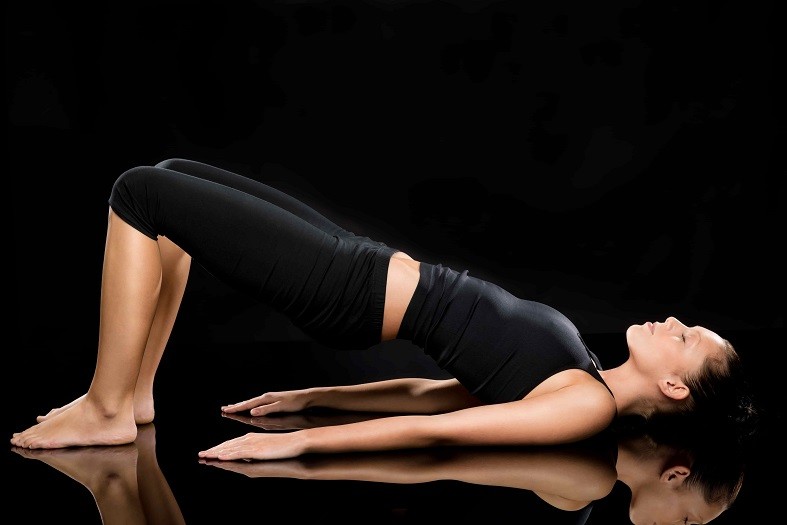
How you will feel: Pilates gives you a feeling of inner strength and increases your body awareness, bringing you more in tune with your body and its individual needs.
Increased knowledge of your body will help you train more efficiently and effectively.
Pilates is a meditative and centring practice, and requires a strong mind and body connection.
Maintaining mental focus helps to clear out and relieve stress, and brings you into the present moment.
You walk away from a Pilates Canary Wharf, London session feeling completely invigorated, vibrant and with your energy restored.
You will have a stretched and realigned body, a clear and focused mind, and an elevated spirit.
WHY DO YOU NEED A PILATES INSTRUCTOR TO DO IT?
There are many videos and internet tutorials on how to do Pilates, but Pilates is a complex exercise system, requiring a careful eye for detail. We have different:
- habits,
- posture,
- jobs and repetitive tasks,
- move differently,
- have dominant sides,
- weaker and stronger muscles,
- ligaments and joints including upper and lower parts of the body thus,
We are very different from each other.
It is easier and safer to learn the Pilates exercises and concepts under the supervision of a trained expert.
When you practice with an experienced Pilates teacher, you won’t have to think about your injuries, postural imbalances you may have, look up at a screen during your workout.
You will be able to peace your mind, distress, relax into the flow of the movements and focus inwardly on the sensations of your body.
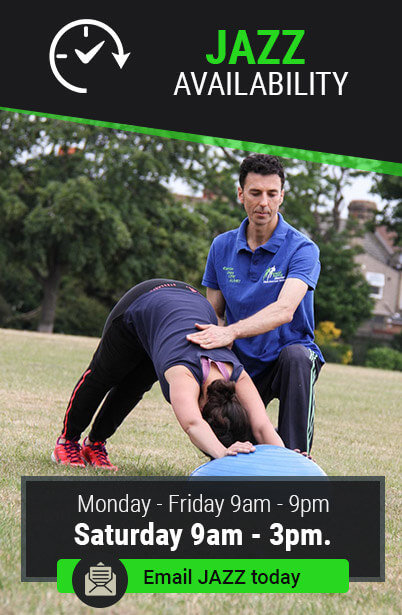
An instructor will be able to:
- assess your posture
- observe your body in motion
- choose specific exercises and modifications based on your individual needs
- help you progress at an appropriate pace in order to help you reach your goals and avoid exercise-related injuries
Pilates is recommended for back pain and after injury, but if carried out incorrectly it can weaken the back and cause existing conditions to deteriorate even though it is a low-impact form of exercise, and injuries are uncommon.
It’s important that you find a qualified teacher and use the one to one advantage to progress very quickly which will also be suited to your challenges, gender, health problems, level of fitness and ability.
References
- https://assets.publishing.service.gov.uk/government/uploads/system/uploads/attachment_data/file/384519/low_back_pain.pdf
- Fayaz A, Croft P, Langford RM, et al Prevalence of chronic pain in the UK: a systematic review and meta-analysis of population studies BMJ Open 2016;6:e010364. doi: 10.1136/bmjopen-2015-010364
- http://webarchive.nationalarchives.gov.uk/20090706100332/http:/www.nice.org.uk/nicemedia/pdf/CG88CostReport.pdf
- https://www.bbc.com/news/business-26338889
- http://www.hse.gov.uk/statistics/causdis/musculoskeletal/msd.pdf



